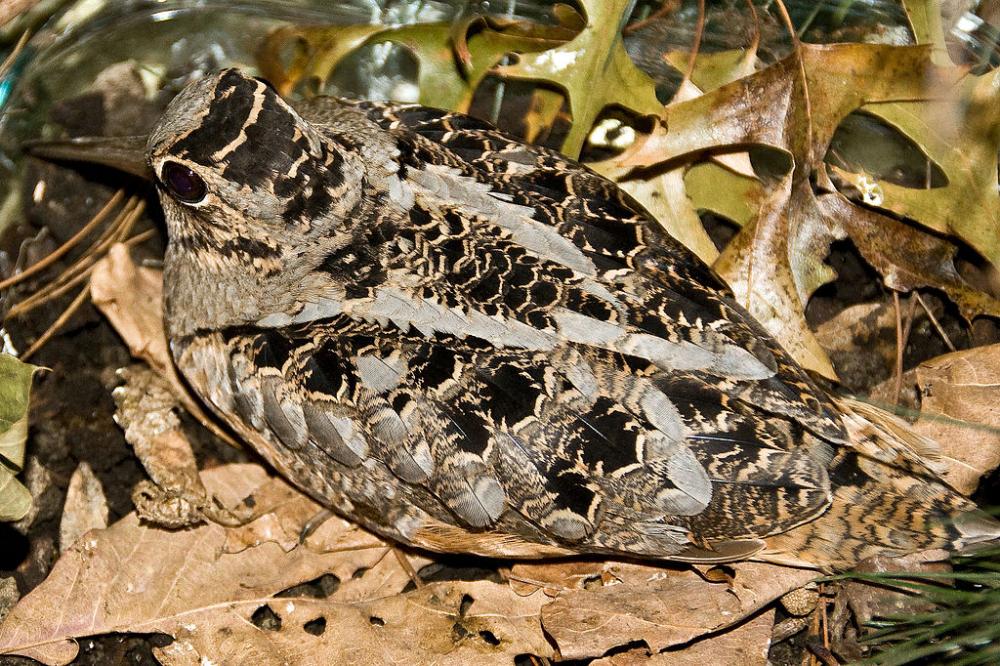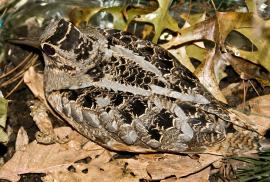Guide to Boreal Birds
Overview
The American Woodcock is seldom seen, for its protective coloring renders it virtually invisible against a background of dried leaves. When flushed from underfoot, it zigzags off through the brush with a whistling of wings. Those fortunate enough to live near their breeding grounds may see woodcocks perform their courtship flight in early spring each year. In these spectacular aerial displays, the male spirals up to a considerable height, circles, then plummets down to earth, twittering as he descends. Woodcocks subsist chiefly on earthworms, which they extract with their long bills; the tip of the upper mandible is flexible so that they can grasp a worm while probing in mud without opening the bill. Insect larvae and occasionally vegetable matter are also eaten.
Description
11" (28 cm). A chunky, quail-sized bird with a very long bill and rounded wings. Rufous below, "dead leaf" pattern above, with transverse black bands on head. Eyes large, bulging, and located close to back of head.
Voice
A loud, buzzy bzeep! similar to the call of a nighthawk and often repeated on the ground about every two seconds during courtship.
Nesting
4 buff eggs, spotted with brown, in a hollow among dead leaves or under a bush.
Habitat
Moist woodlands and thickets near open fields.
Range/Migration
Breeds from southern Manitoba and Newfoundland south to Texas, Gulf Coast states, and central Florida. Winters in southeastern states.



